FAQs
Frequently Asked Questions
Thank you for your interest in Soapstone Solar on Audley Farm.
If your question is not covered in the FAQ below, please submit a question on the contact page and we will be sure to respond.
Renderings of Soapstone Solar from Roadways
- Soapstone Solar on Audley Farm was carefully sited to minimize or completely obscure any views of the project from roadways.
- The remote nature of the location provides low to no visibility from Routes 7, 240, 608 and 612.
- Soapstone will be constructed with low-profile solar panels and project no audible noise when operating.
*Renderings are considered projected visuals and are subject to change as development continues*
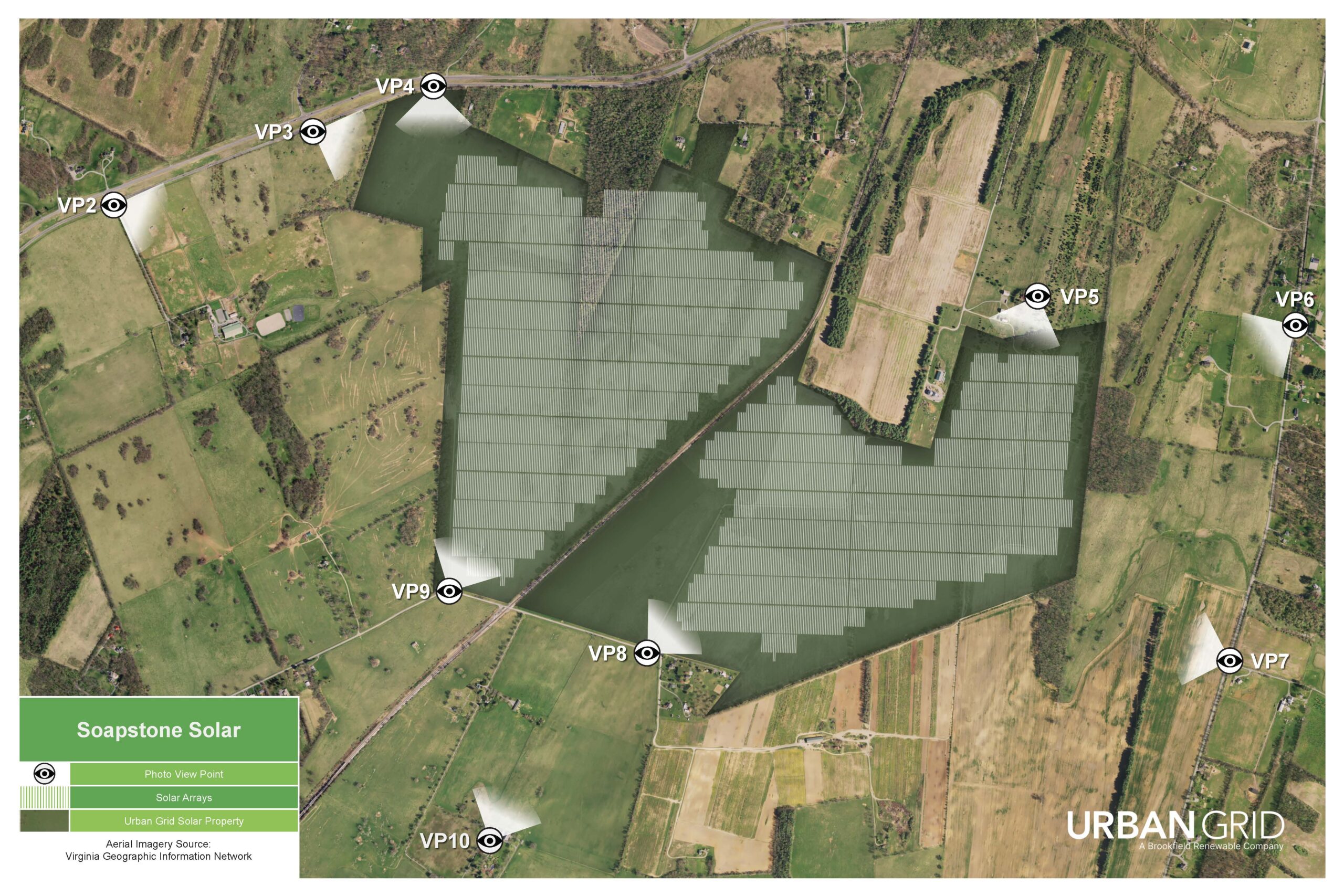
Take a Video Site Tour of Monarch Solar . . .
PROJECT LOCATION
Soapstone resides in northern Virginia, situated north of route 7 and southeast of route 340 in Clarke County. The remote nature of the location provides low to no visibility from Routes 7, 240, 608 and 612. We are working with a few adjacent landowners where there is some anticipated visibility of the project from their property, to add additional vegetative screening.
To preview the view of Soapstone Solar from area roadways, view the gallery of project renderings below.
The facility will interconnect to the power grid on an existing 138kV FirstEnergy transmission line located 0.74 miles west of the solar array.
Audley Farms owns the land where the solar array will be located. The land that will be utilized for the utility line connecting the solar facility to First Energy’s transmission line is owned by Nerd Farms.


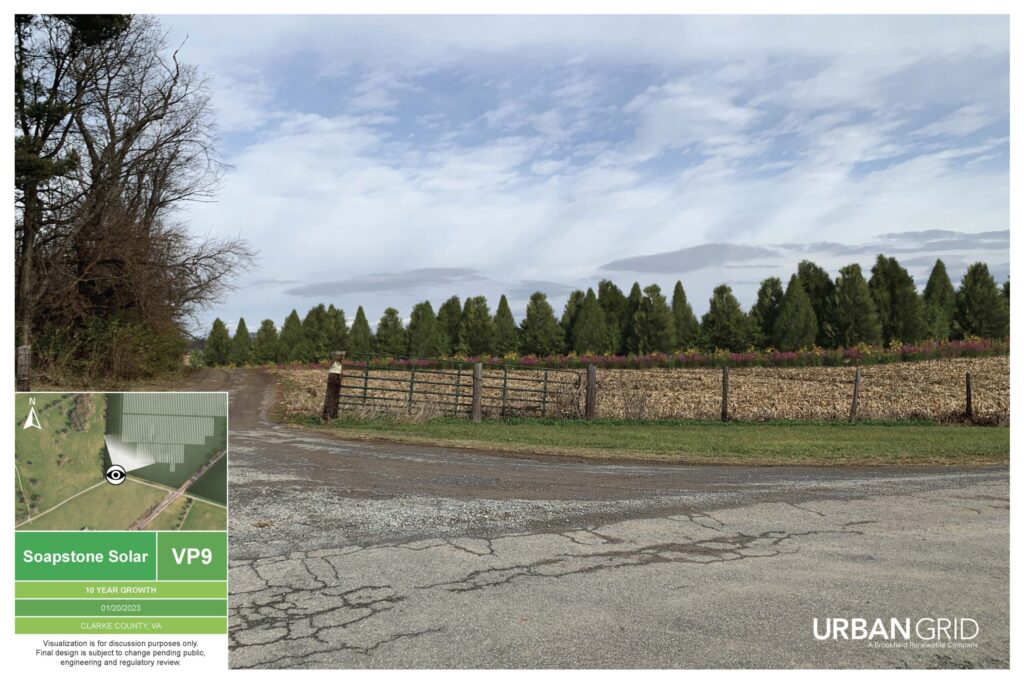

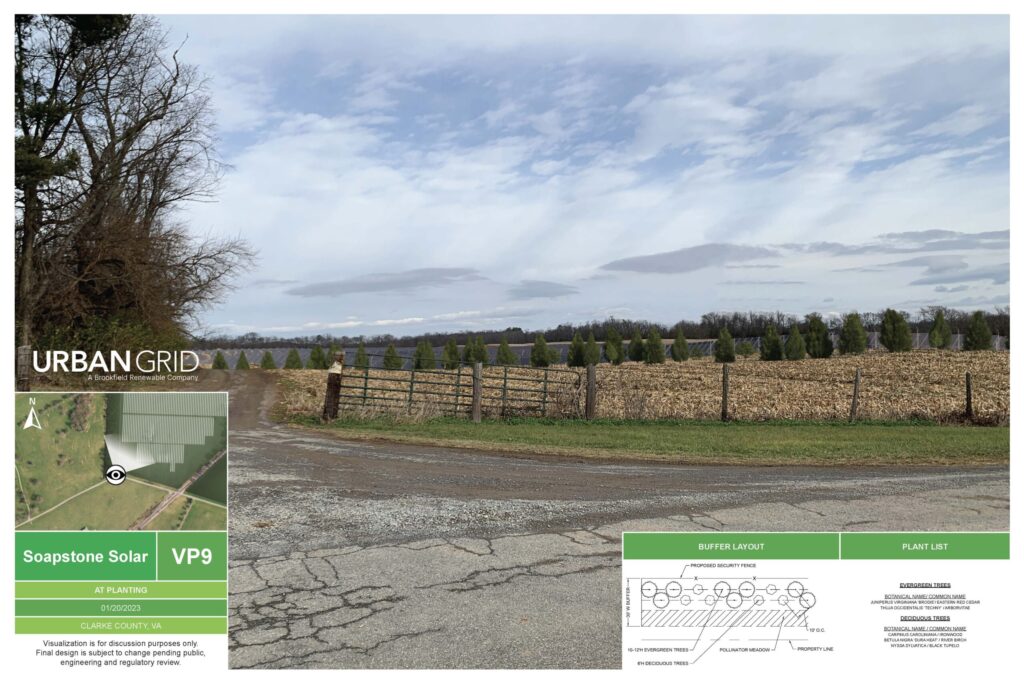
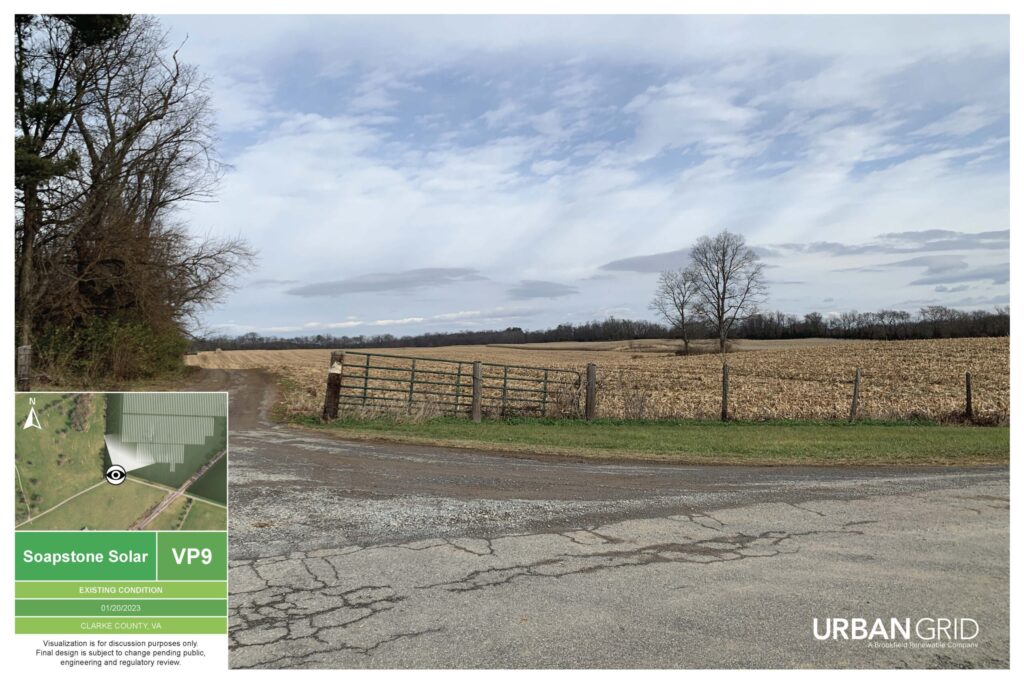
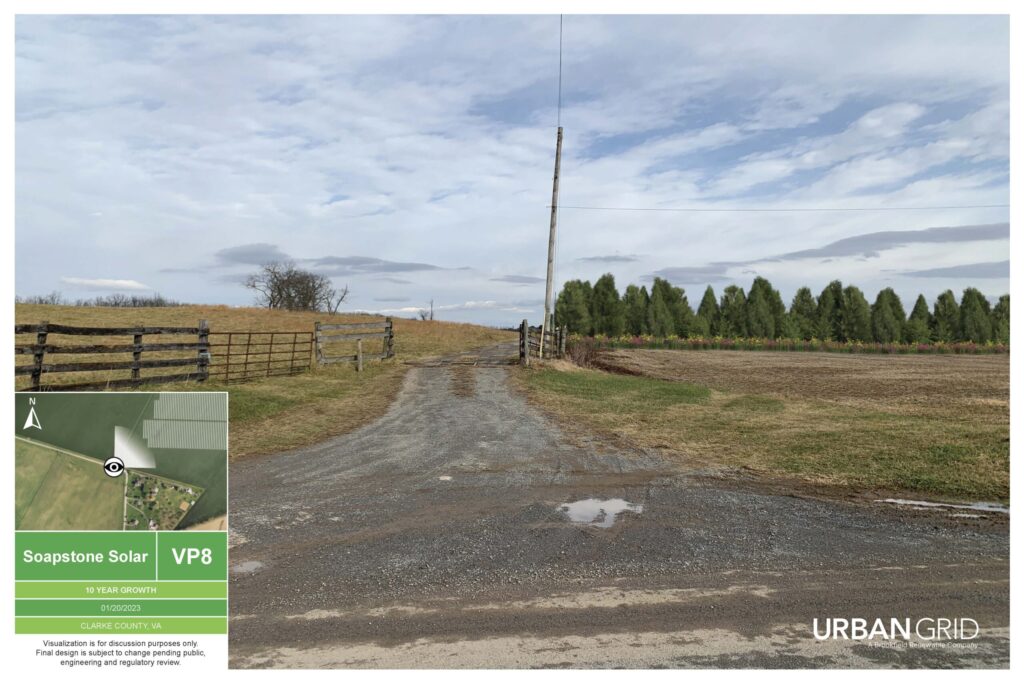
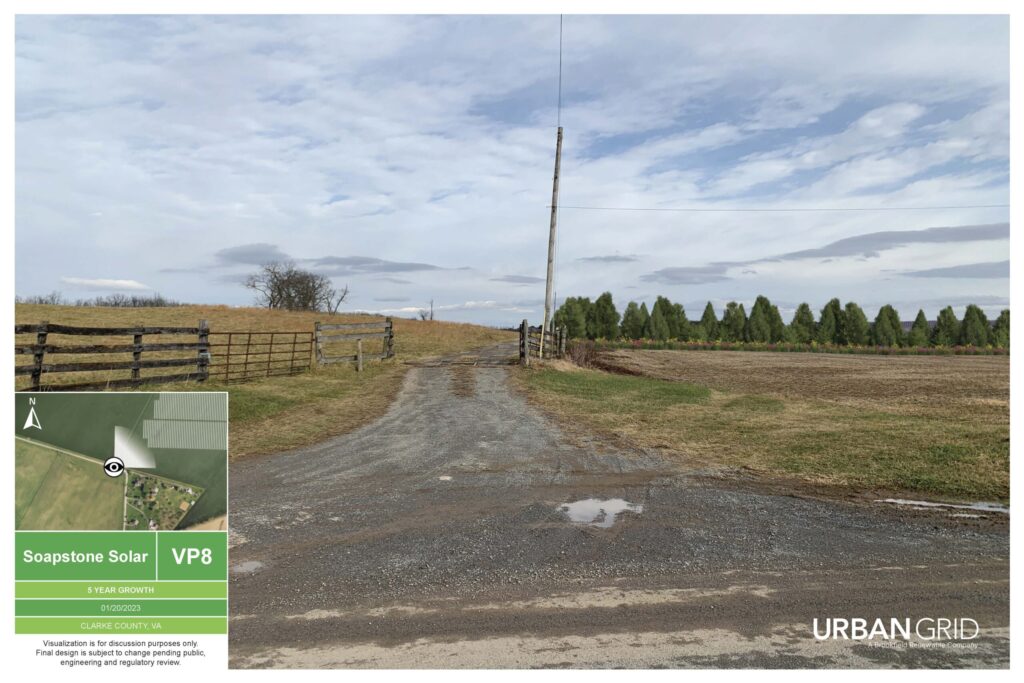
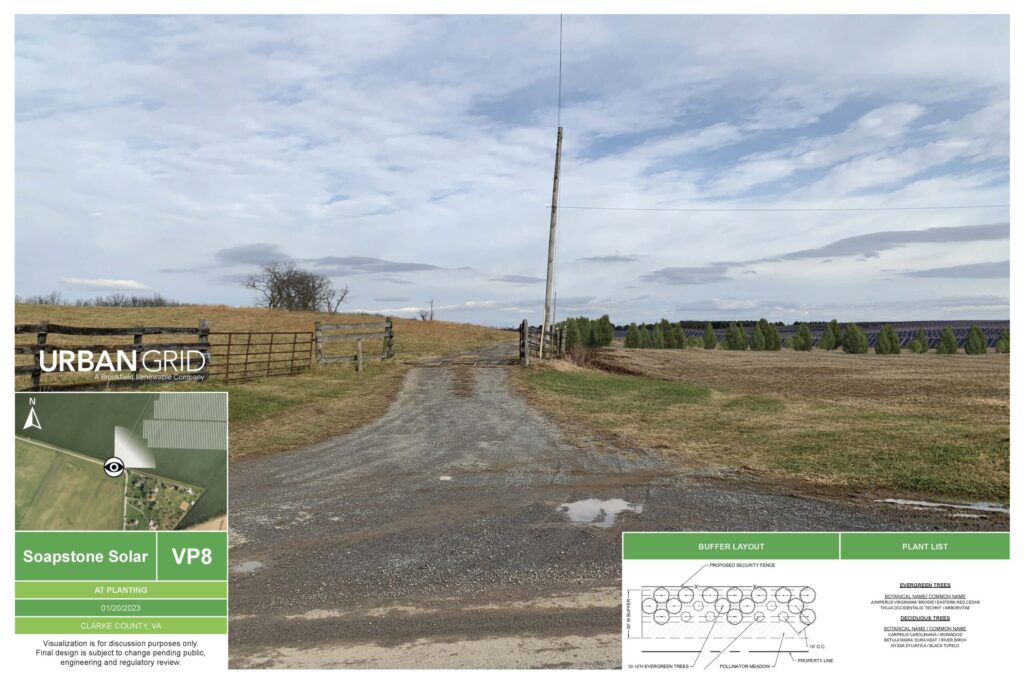
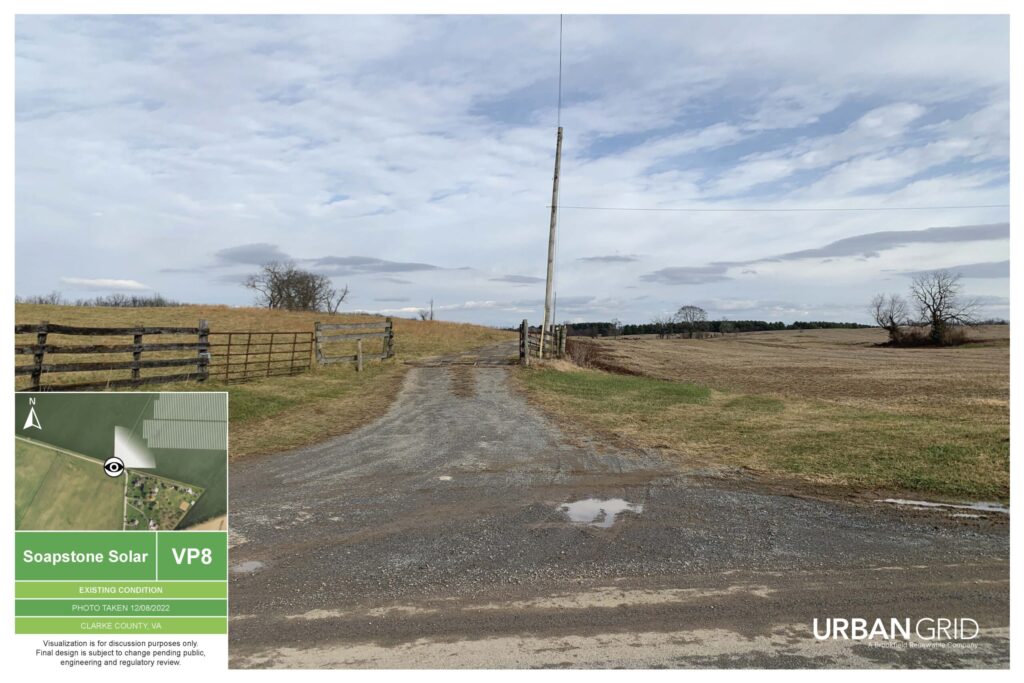


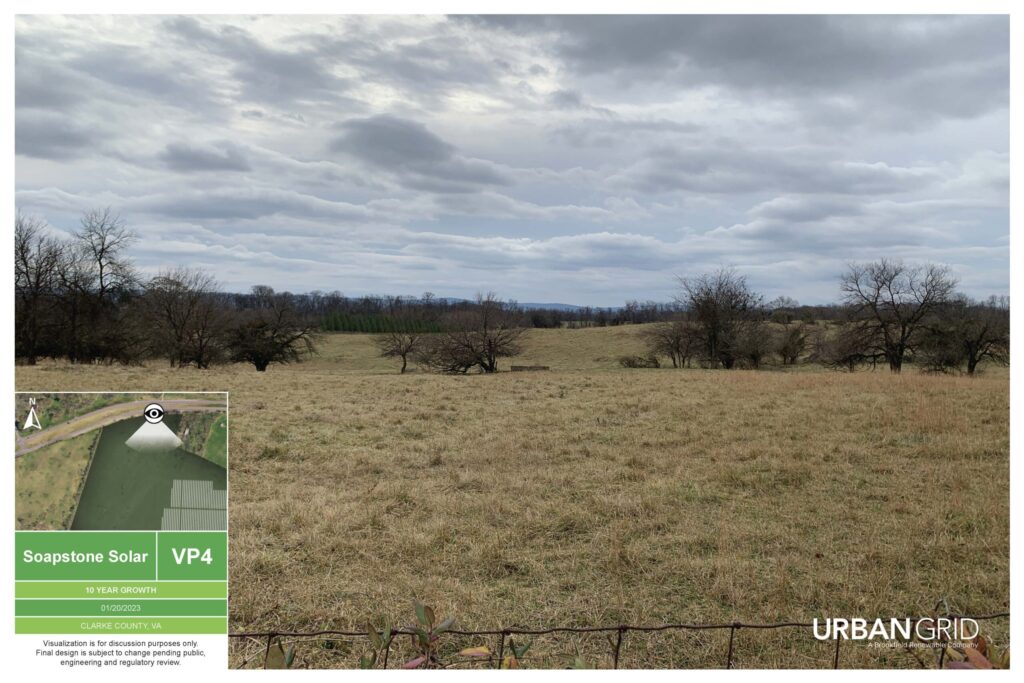


SAFETY & OPERATIONS
Solar panels, also known as photovoltaic modules (PV modules), work by turning sunlight into direct current (DC) electricity. These panels are supported by some type of racking structure that can be fixed, or it may rotate on an axis. Solar panels are paired with inverters that convert the DC electricity into a more useable form of electricity known as alternating current (AC.) The AC electricity then passes through a transformer to ensure that the power is the appropriate voltage before it is sent to the electric grid.
When the solar facility is no longer efficient, the system will be decommissioned and the equipment removed, recycling everything that can be recycled, and returning the land to the condition in which it existed prior to the installation of the solar project. Solar has a minimal impact on the land, unlike fossil fuel power plants. When the project is removed, the land is returned to essentially its original state. Many landowners see leasing land for utility-scale solar projects as a form of land banking, as it has minimal long-term impact on the value of the land. Urban Grid assumes all responsibility for decommissioning and places a secure bond with the county in the event that project ownership should change in the future. This means that the county and its residents are NOT responsible for any costs for the removal of a project at the end of its useful life.
Solar panels do not produce noise, but the inverters that change the current of electricity from DC to AC do produce a slight hum that is not audible past the property boundaries. Solar projects are considered quiet neighbors.
Urban Grid utilizes the best available Photovoltaic solar (PV) panel technology for all of our utility-scale projects. These panels are dark in color and are treated with an anti-reflective coating. The purpose of solar panels is to absorb as much sunlight as possible to produce energy efficiently so the point of the panels is to be as minimally reflective as possible. Solar panels are generally less reflective than windows and have been approved by the Federal Aviation Administration for installation on and around airports across the country.
ENVIRONMENT & WILDLIFE
Utility-scale solar projects are required to reduce runoff flow rates, improve water quality, and may actually improve soil conditions by stabilizing the entire project area. Stormwater management plans and calculations are a required part of the solar development and permitting process. These plans are prepared by professional engineers to ensure that projects do not contribute to erosion or flooding.
We follow the strict requirements of the Virginia Department of Environmental Quality to ensure our projects meet and often exceed guidelines to protect surrounding waterways. For example, we are adding additional erosion and sediment control measures throughout the project to help better manage the construction of the project. These additional measures may consists of additional engineered ditches throughout the panel areas, additional ditches upstream of the sediment ponds to reduce flow running down the pond walls, additional filter socks throughout the project to maintain sheet flow, and extensive application of erosion control matting to protect soil that has been seeded.
Once operational, the use of perennial ground cover and elimination of annual tillage, irrigation, and fertilizer (in the case of farmland) allows the soil to absorb water and rejuvenate during the life of the project. With the non-invasive vegetation used on solar projects, these types of grasses have deep root systems help break up the soil over the operation of the project and improve permeability and infiltration rates of stormwater runoff. Other types of developments have high percentages of impervious area and typically have very manicured lawns that do not allow the vegetation to mature; all this contributes to much higher runoff rates than solar projects.
Additionally, the solar project executes maintenance agreements with DEQ, requiring the project owners to maintain the stormwater systems throughout the life of the project.
Solar farms do not pose a threat to wildlife. Wildlife studies are an important part of the development process — environmental scientists study proposed sites to ensure that utility-scale solar development minimizes impact to wildlife. Solar projects can also provide important habitat for birds and pollinators like bees and butterflies.
We coordinate with, and follow the requirements of many state and federal agencies during the development and permitting process of solar projects. Some of these agencies consist of Virginia Department of Wildlife Resources, Virginia Department of Conservation and Recreation, US Army Corps of Engineers, US Fish and Wildlife, and the Virginia Department of Historic Resources.